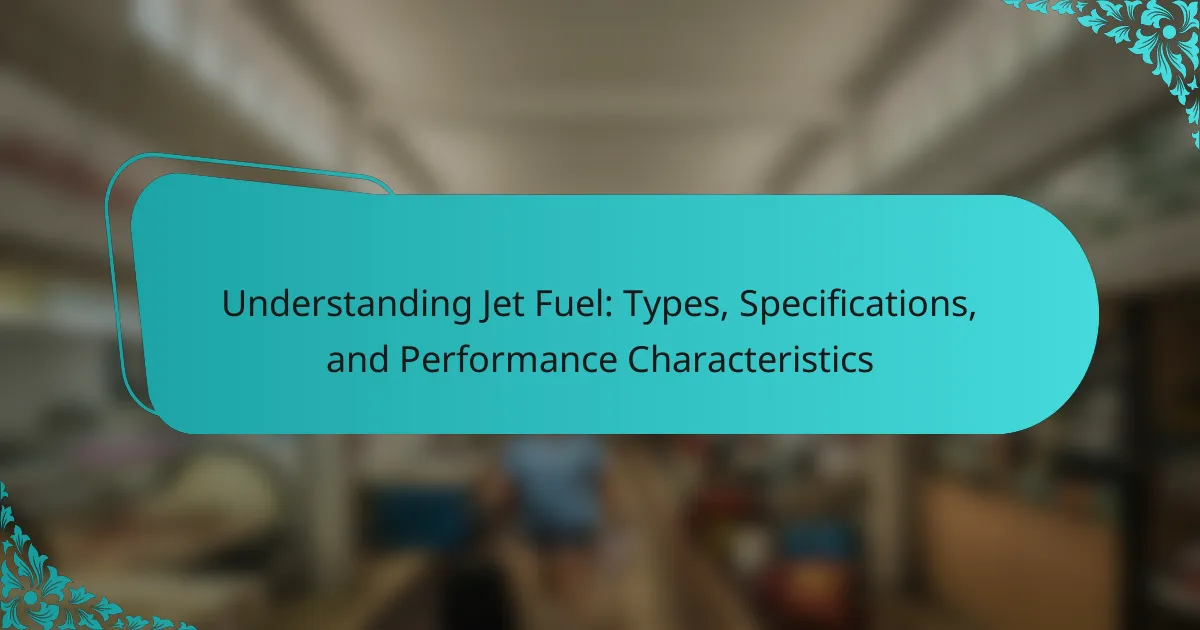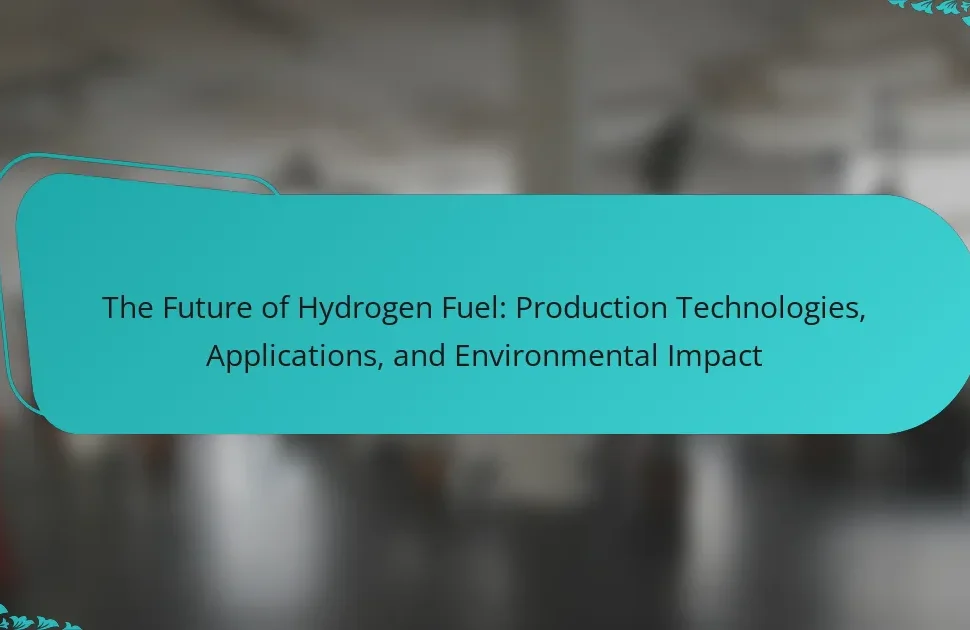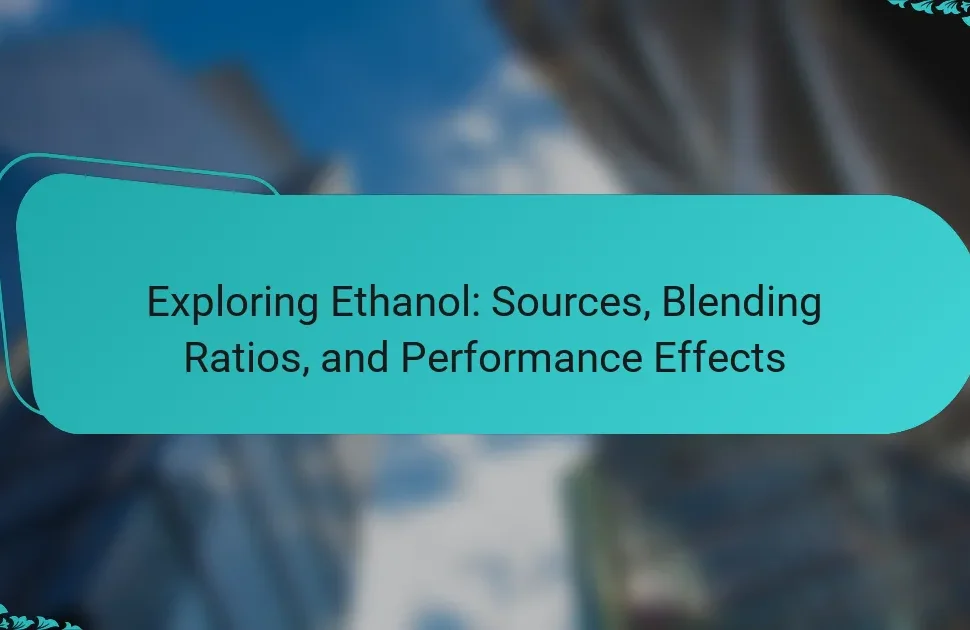
What is Jet Fuel?
Jet fuel is a type of aviation fuel specifically designed for use in aircraft. It primarily consists of kerosene and is formulated to meet stringent performance standards. Jet fuel provides the necessary energy for jet engines to operate efficiently. The two main types of jet fuel are Jet A and Jet A-1. Jet A is commonly used in the United States, while Jet A-1 is more widely used internationally. Both types have a flash point above 38 degrees Celsius. Jet fuel must also meet specifications for freezing point, density, and viscosity. These specifications ensure safe and reliable performance in various operating conditions.
How is Jet Fuel produced?
Jet fuel is produced primarily through the refining of crude oil. The refining process involves distillation, where crude oil is heated and separated into various components. Jet fuel specifically comes from the kerosene fraction of crude oil. This fraction is then subjected to further processing, including hydrocracking and hydrotreating. Hydrocracking breaks down larger hydrocarbons into smaller, more useful molecules. Hydrotreating removes impurities such as sulfur to meet environmental standards. The final product is a high-quality fuel suitable for aviation. This process ensures that jet fuel meets strict specifications for performance and safety.
What raw materials are used in Jet Fuel production?
Jet fuel production primarily utilizes crude oil as its raw material. Crude oil undergoes refining processes to produce various fuel types, including jet fuel. The refining process involves distillation, which separates crude oil into different components based on boiling points. Kerosene is the primary product derived from this process for jet fuel. Jet fuel types, such as Jet A and Jet A-1, are specifically formulated from these kerosene fractions. Additional additives may be included to enhance performance and stability. This method of production is standardized across the aviation industry.
What processes are involved in refining Jet Fuel?
The processes involved in refining jet fuel include distillation, hydrocracking, and hydrotreating. Distillation separates crude oil into different fractions based on boiling points. Jet fuel is derived from the kerosene fraction of crude oil. Hydrocracking breaks down larger hydrocarbons into smaller, more useful molecules. This process enhances the yield of jet fuel. Hydrotreating removes impurities such as sulfur and nitrogen. It improves the fuel’s stability and performance. Each of these processes is essential for producing high-quality jet fuel that meets specific performance standards.
What are the different types of Jet Fuel?
The different types of jet fuel include Jet A, Jet A-1, Jet B, and TS-1. Jet A is commonly used in the United States. It has a freezing point of -40 degrees Celsius. Jet A-1 is the international standard for jet fuel. It has a lower freezing point of -47 degrees Celsius. Jet B is a wide-cut fuel used in very cold climates. It has a lower flash point than Jet A and A-1. TS-1 is a type of jet fuel used primarily in Russia and Eastern Europe. Each type has specific properties that suit different operational needs.
What is Jet A and how does it differ from Jet A-1?
Jet A is a type of aviation fuel primarily used in jet engines. It is a kerosene-based fuel that meets specific standards for performance and safety. Jet A has a higher freezing point compared to Jet A-1. Jet A freezes at -40°C, while Jet A-1 has a freezing point of -47°C. This difference makes Jet A-1 more suitable for international flights where lower temperatures may be encountered. Jet A is predominantly used in the United States, while Jet A-1 is more common globally. The specifications for both fuels are defined by ASTM D1655.
What are the characteristics of Jet B fuel?
Jet B fuel is a type of aviation fuel primarily used in turbojet and turboprop engines. It is a kerosene-based fuel that has a lower flash point compared to Jet A fuel. Jet B has a flash point of approximately -10 °C to 0 °C, making it suitable for cold weather operations. This fuel has a lower freezing point, around -60 °C, allowing for better performance in extreme temperatures. Jet B fuel is known for its good low-temperature fluidity and volatility. It is composed of a mixture of hydrocarbons derived from crude oil refining. Jet B is often used in regions with colder climates, where its properties provide operational advantages.
What specifications define Jet Fuel quality?
Jet fuel quality is defined by specifications including composition, freezing point, flash point, and density. The composition must meet standards set by ASTM D1655 and DEF STAN 91-91. The freezing point should be below -47 degrees Celsius to prevent fuel from solidifying at high altitudes. The flash point must be above 38 degrees Celsius for safety during handling and storage. Density typically ranges from 775 to 840 kg/m³, affecting performance and efficiency. Additionally, the presence of contaminants like water and particulate matter must be minimized to ensure optimal engine performance. These specifications are critical for ensuring safe and efficient aircraft operation.
What are the key performance metrics for Jet Fuel?
Key performance metrics for jet fuel include specific energy, flash point, freezing point, and density. Specific energy measures the energy content per unit mass, typically around 43 MJ/kg for jet fuel. The flash point indicates the lowest temperature at which vapors ignite, generally above 38°C. The freezing point, crucial for high-altitude performance, usually remains below -47°C. Density affects fuel weight and storage, averaging about 0.8 kg/L. These metrics ensure optimal engine performance and safety in aviation applications.
How do specifications vary between different types of Jet Fuel?
Specifications vary significantly between different types of jet fuel. Jet fuels are categorized primarily into Jet A, Jet A-1, and Jet B. Jet A has a freezing point of -40°C, while Jet A-1 has a lower freezing point of -47°C. Jet B is a wide-cut fuel with a freezing point of -60°C.
The flash point of Jet A and Jet A-1 is approximately 38°C, whereas Jet B has a flash point around 25°C. Additionally, Jet A and Jet A-1 have similar energy content, approximately 43 MJ/kg. Jet B, however, has a slightly lower energy content due to its composition.
Moreover, Jet A and Jet A-1 are kerosene-based, while Jet B is a blend of kerosene and gasoline. This composition affects the fuel’s volatility and performance in various temperatures. The specific gravity of Jet A and Jet A-1 is about 0.78, while Jet B can be slightly lower.
These variations in specifications influence the operational suitability of each fuel type for different aircraft and environmental conditions.

What are the performance characteristics of Jet Fuel?
Jet fuel exhibits several key performance characteristics. It has a high energy density, typically around 35 MJ/L. This allows for efficient energy release during combustion. Jet fuel also has a low freezing point, generally around -47°C for Jet A fuel. This characteristic ensures fluidity at high altitudes. The flash point of jet fuel is between 38°C and 60°C, which minimizes fire hazards. Additionally, jet fuel has a wide operational temperature range, maintaining performance from -40°C to 60°C. The specific gravity of jet fuel ranges from 0.78 to 0.84, influencing its storage and handling. These characteristics are critical for ensuring safe and efficient operation in aviation.
How does Jet Fuel affect aircraft performance?
Jet fuel significantly impacts aircraft performance by influencing engine efficiency, thrust, and overall range. The specific energy content of jet fuel affects how much energy is available for propulsion. High-quality jet fuels provide better combustion characteristics, leading to increased thrust. Additionally, the fuel’s density affects the aircraft’s weight and balance. Lower density fuels can reduce overall weight, enhancing fuel efficiency. The thermal stability of the fuel also plays a role in engine performance and reliability. For instance, Jet A-1, a common jet fuel, has a flash point of 38°C, which contributes to safety and performance in various operating conditions.
What role does energy density play in Jet Fuel performance?
Energy density significantly impacts jet fuel performance. Higher energy density means more energy is available per unit of fuel. This results in improved fuel efficiency and longer flight ranges. For example, Jet A fuel has an energy density of approximately 35 MJ/L. This allows aircraft to travel further without needing to carry excessive fuel loads. Additionally, energy density affects engine design and performance. Engines optimized for higher energy density fuels can achieve better thrust-to-weight ratios. Overall, energy density is a crucial factor in determining the operational capabilities of aircraft.
How does temperature affect Jet Fuel efficiency?
Temperature significantly affects jet fuel efficiency. Higher temperatures can reduce fuel density, leading to lower energy content per volume. This reduction in density decreases the overall efficiency of fuel combustion. Conversely, lower temperatures can increase fuel density, enhancing energy content and combustion efficiency. Studies show that jet fuel performance varies with temperature fluctuations, impacting engine performance and fuel consumption rates. For instance, at extreme cold temperatures, fuel can become more viscous, affecting flow rates and atomization in engines. Understanding these effects is crucial for optimizing fuel management in aviation operations.
What are the safety considerations for handling Jet Fuel?
Safety considerations for handling jet fuel include proper storage, handling procedures, and personal protective equipment (PPE). Jet fuel is highly flammable and can pose serious health risks. It should be stored in designated containers that are clearly labeled. Always use grounding and bonding techniques to prevent static discharge. Adequate ventilation is essential to minimize inhalation risks. Workers must wear appropriate PPE, such as gloves and goggles, to prevent skin and eye contact. Emergency procedures should be established and well-communicated. Regular training on handling procedures is crucial to ensure safety compliance.
What precautions should be taken during storage and transportation?
Jet fuel must be stored and transported under specific precautions to ensure safety and quality. It should be kept in clean, dry, and well-ventilated areas to prevent contamination. Storage tanks must be regularly inspected for leaks and integrity. Temperature control is crucial; extreme heat can lead to vaporization and pressure buildup. Fuel should be kept away from sources of ignition to avoid fire hazards. Proper labeling of containers is essential to avoid mix-ups with other substances. Transportation should comply with regulatory guidelines, including using appropriate vehicles designed for hazardous materials. Following these precautions helps maintain fuel quality and ensures safety during storage and transport.
How can contamination affect Jet Fuel safety?
Contamination can significantly compromise jet fuel safety. Contaminants such as water, microbes, and particulates can lead to fuel degradation. Water can promote microbial growth, resulting in the formation of sludge. Sludge can clog fuel filters and disrupt fuel flow. Particulates can cause wear and tear on engine components. Additionally, contamination can lower the fuel’s flash point, increasing fire hazards. According to the ASTM D1655 standard, jet fuel must meet strict cleanliness requirements to ensure safety. Failure to adhere to these standards can result in engine failure or accidents.

What trends are influencing the future of Jet Fuel?
Sustainable aviation fuel (SAF) is a major trend influencing the future of jet fuel. SAF is derived from renewable resources and reduces carbon emissions significantly. The global aviation industry aims for net-zero carbon emissions by 2050. This goal drives investment and innovation in SAF production. Additionally, advancements in fuel efficiency technologies are influencing jet fuel trends. Aircraft manufacturers are developing more efficient engines and aerodynamic designs. Regulatory pressures are also shaping the jet fuel landscape. Governments are implementing stricter emissions standards for airlines. Finally, the rise of electric and hybrid aircraft technologies is emerging as a trend. These technologies may reduce reliance on traditional jet fuel in the long term.
How is the aviation industry adapting to sustainable fuel sources?
The aviation industry is adapting to sustainable fuel sources by increasing the use of sustainable aviation fuel (SAF). SAF is produced from renewable resources, reducing greenhouse gas emissions compared to traditional jet fuels. Major airlines, including United and Lufthansa, have committed to using SAF in their operations. The industry aims to achieve net-zero carbon emissions by 2050. According to the International Air Transport Association, SAF can reduce lifecycle emissions by up to 80%. Partnerships with biofuel producers are being formed to scale up production. Regulatory frameworks are evolving to support SAF adoption. Research and development are focused on improving SAF technologies and reducing costs.
What are the benefits of biofuels in aviation?
Biofuels in aviation offer significant environmental benefits. They can reduce greenhouse gas emissions by up to 80% compared to traditional fossil fuels. Biofuels are derived from renewable resources, making them sustainable. They can help decrease reliance on fossil fuels, enhancing energy security. Additionally, biofuels can lead to improved engine performance and reduced particulate emissions. Studies have shown that using biofuels can result in lower overall life-cycle carbon emissions. The use of biofuels also supports agricultural economies by creating new markets for crops. These factors collectively contribute to a more sustainable aviation industry.
How are regulations impacting Jet Fuel production and use?
Regulations significantly impact jet fuel production and use by enforcing standards for emissions and sustainability. Stricter environmental regulations aim to reduce greenhouse gas emissions from aviation. These regulations often require the adoption of sustainable aviation fuels (SAFs). SAFs are produced from renewable resources and can lower lifecycle emissions compared to conventional jet fuels. Compliance with these regulations may increase production costs for fuel manufacturers. Additionally, regulatory incentives can promote research and development of cleaner fuel technologies. The International Civil Aviation Organization (ICAO) sets global standards that influence national regulations. As a result, the aviation industry is moving towards more sustainable practices due to regulatory pressures.
What best practices should be followed when using Jet Fuel?
Best practices when using jet fuel include ensuring proper storage conditions. Jet fuel must be stored in clean, dry tanks to prevent contamination. Regularly inspect fuel storage systems for leaks and corrosion. Maintain the correct temperature to prevent fuel degradation. Use filtration systems to remove particulates before fueling aircraft. Follow standard operating procedures for fuel handling to ensure safety. Training personnel on fuel handling protocols is essential for preventing accidents. Finally, adhere to regulatory guidelines set by aviation authorities for fuel quality and safety.
How can operators ensure optimal fuel efficiency?
Operators can ensure optimal fuel efficiency by implementing several key strategies. Regular maintenance of aircraft engines is crucial. Well-maintained engines operate more efficiently, reducing fuel consumption. Operators should also monitor flight paths closely. Optimizing routes can minimize fuel use by avoiding unnecessary detours.
Another effective method is adjusting flight speeds. Flying at optimal speeds can significantly enhance fuel efficiency. Utilizing advanced flight planning software aids in making data-driven decisions. This software analyzes various factors to suggest the most fuel-efficient routes.
Additionally, operators should consider weight management. Reducing excess weight on board can lead to lower fuel consumption. Implementing fuel-saving technologies, such as winglets, can also improve aerodynamics. These modifications can result in noticeable fuel savings.
Lastly, training pilots in fuel-efficient flying techniques is essential. Educated pilots can make real-time decisions that enhance fuel efficiency. Collectively, these strategies contribute to better fuel management and operational cost savings.
What common issues should be monitored during Jet Fuel usage?
Common issues to monitor during jet fuel usage include contamination, temperature fluctuations, and sediment accumulation. Contamination can arise from water, microbial growth, or particulate matter. It can lead to fuel system corrosion and engine performance issues. Temperature fluctuations may affect fuel viscosity and flow characteristics, impacting engine efficiency. Sediment accumulation can block fuel filters and reduce fuel flow. Regular testing and maintenance are essential to mitigate these risks. Monitoring these factors ensures optimal performance and safety in aviation operations.
Jet fuel is a specialized aviation fuel primarily composed of kerosene, essential for powering jet engines with specific performance standards. The article covers various types of jet fuel, including Jet A, Jet A-1, and Jet B, detailing their unique specifications such as freezing and flash points. It also explores the production processes, safety considerations, and the impact of jet fuel on aircraft performance. Additionally, trends toward sustainable aviation fuel and regulatory influences on jet fuel production are discussed, providing a comprehensive understanding of jet fuel’s role in the aviation industry.




